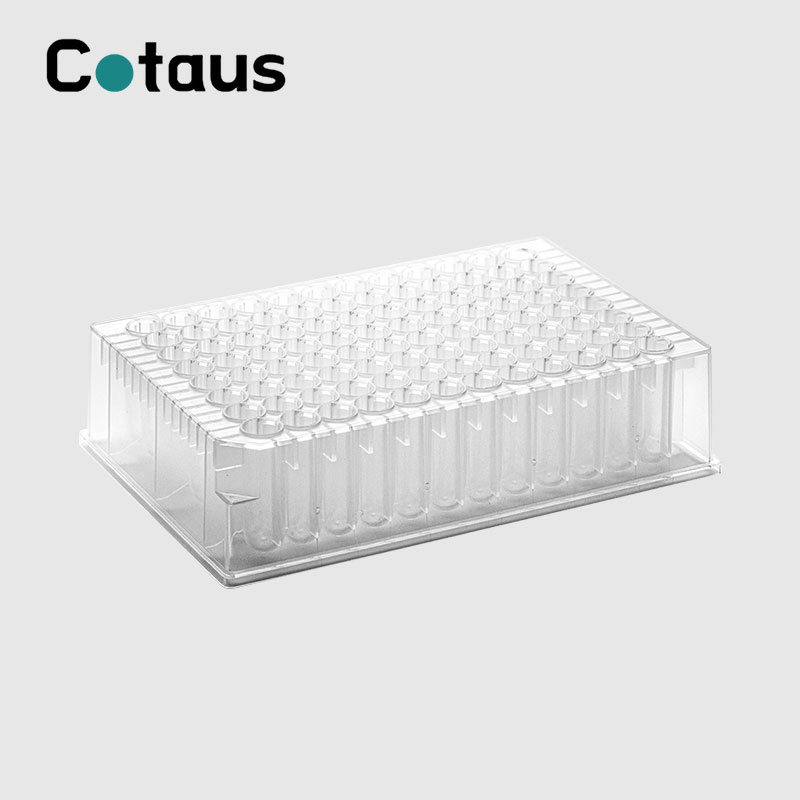Securing Success: Recommended Methods for Sealing Deep Well Plates to Prevent Contamination
2023-11-06
In the realm of laboratory research and experimentation, maintaining a sterile and uncontaminated environment is critical. Deep well plates, such as the widely used 1.2ml round U-bottom design, serve as crucial vessels for various applications, from sample storage to high-throughput screening. To safeguard the integrity of your experiments and samples, sealing these plates effectively is paramount. In this blog, we will explore the recommended methods for sealing deep well plates to prevent contamination and ensure the success of your research.
The Significance of Proper Sealing
A deep well plate's purpose is to house valuable samples, reagents, or cultures while safeguarding them from external contaminants. The chosen sealing method should maintain sterility, prevent evaporation, and minimize the risk of cross-contamination between wells. Let's delve into the recommended methods for securely sealing deep well plates:
1. Adhesive Sealing Films:
- Parafilm: Parafilm is a widely recognized and economical option for sealing deep well plates. It is a flexible, semi-transparent film that adheres to the plate's surface and forms a tight seal. Parafilm is easy to cut to the desired size, making it versatile for various plate formats. It offers protection against evaporation and contamination.
- Aluminum Seals: Aluminum seals are another effective option for deep well plate sealing. These seals are pre-cut to fit specific plate formats and are typically used for high-throughput applications. They create an airtight and secure seal that effectively prevents contamination and evaporation.
2. Heat Sealing:
- Heat Sealing Films: Heat-sealing films are designed to create a secure, tamper-evident seal on deep well plates. This method involves using a heat sealer device to melt and fuse the film to the plate's edges, forming a robust barrier against contamination. Heat sealing is particularly suitable for long-term storage and high-throughput applications.
3. Screw Cap Sealing:
- Screw Caps: Some deep well plates come with compatible screw caps that can be tightly sealed to prevent contamination. This method is especially useful for samples that require long-term storage and protection against external influences.
4. Silicone Mats and TPE Sealing Mats:
- Silicone Mats: Silicone mats and thermoplastic elastomer (TPE) sealing mats are designed to provide a secure, reusable sealing method. They create a reliable barrier against contamination and are ideal for applications where frequent access to the plate is required.
Key Considerations:
- Compatibility: Ensure that the selected sealing method is compatible with the specific deep well plate you are using. Some plates come with proprietary sealing options, so consult the manufacturer's guidelines.
- Sample Integrity: Consider the nature of your samples and the required sealing method. Different sealing methods may be better suited to maintaining sample integrity or preventing evaporation.
- Labeling: Ensure that your sealing method allows for proper labeling and identification of the wells.
- Sterility: Maintain aseptic techniques when sealing plates to avoid introducing contaminants during the process.
Conclusion
The choice of sealing method for deep well plates is a crucial step in preserving the integrity of your experiments and samples. Adhesive sealing films, heat sealing, screw caps, and silicone/TPE mats are all effective options, each offering unique advantages to suit various applications.
Selecting the right sealing method ensures that your deep well plates serve as robust and reliable containers, guarding your valuable samples against contamination and ensuring that your research yields precise and dependable results.



